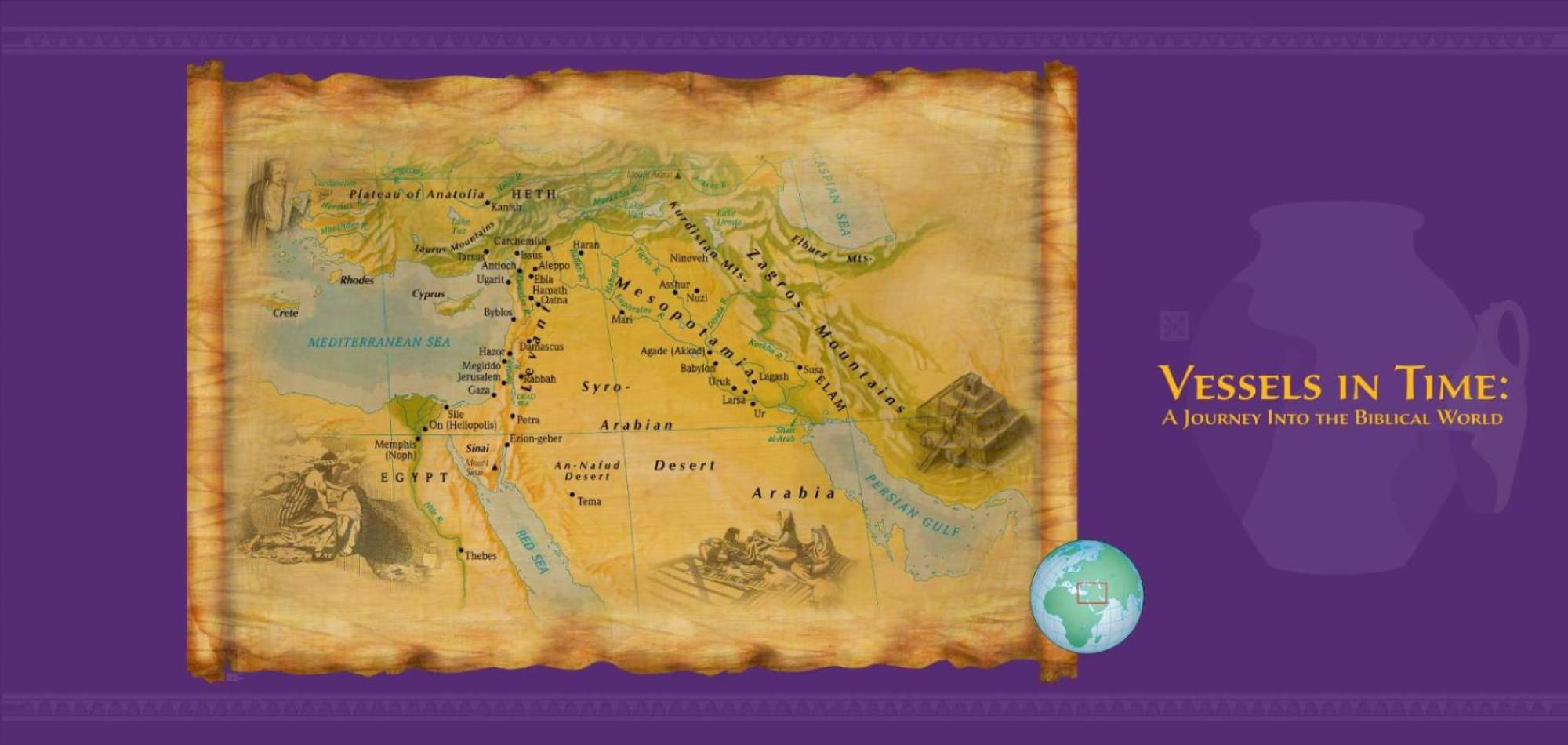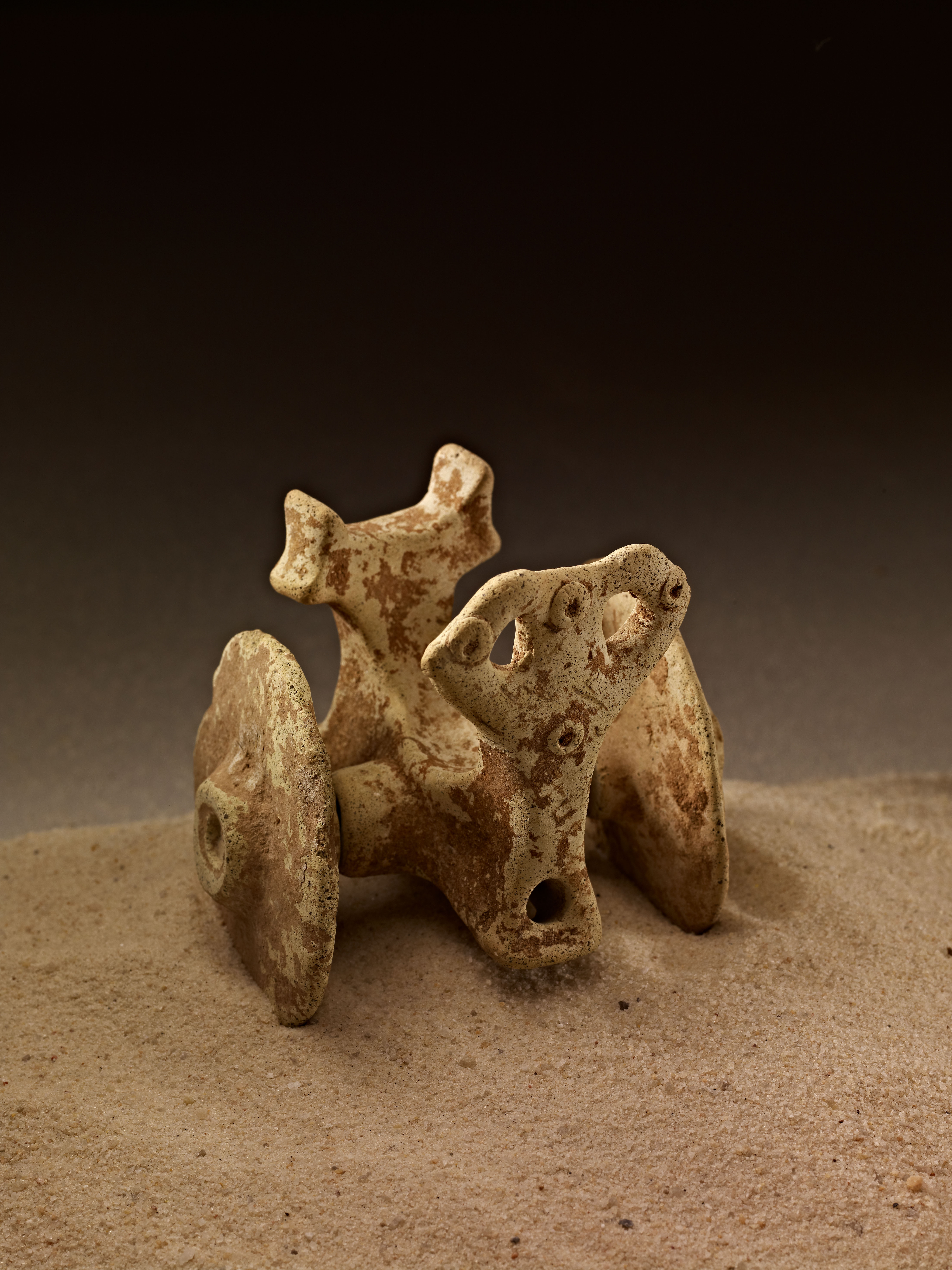
The Temple: Cultic Life in Israel
Iron Age (966 B.C.)
The united monarchy under David and Solomon ushered in a golden age of Israel’s history. David relocated Israel's capital to Jerusalem and under his son, Solomon, extravagant construction took place. The Temple was finished in his fourth year (966 B.C.) and was the crowning achievement of his building activity. The new Temple would be the center of Israel's worship and religion.
The description that the Temple was decorated in “cherubim, palm trees, and open flowers” (1 Kings 6:29) reflects the architecture of the period. Capitals found at Samaria, Megiddo, Hazor, and Ramat Rachel depict the drooping fronds of the palm tree's crown in a stylized manner. The columns beneath them were either square or round and could be understood as the trunk of the tree.
The word used for cherubim in biblical contexts is difficult to define. The cherubim
are depicted as guardians to the holy realm of the divine. In Ezekiel's vision, they
are described with human and animal features, including the faces of a lion, ox, eagle,
and man. They are described with wings and with the soles of a calf's foot. Some scholars
have equated these cherubim with the composite creatures found in temple contexts
in Cyprus, Phoenicia, and Israel. An ivory plaque from Nimrud depicts such a composite
creature among open flowers and palm motifs.